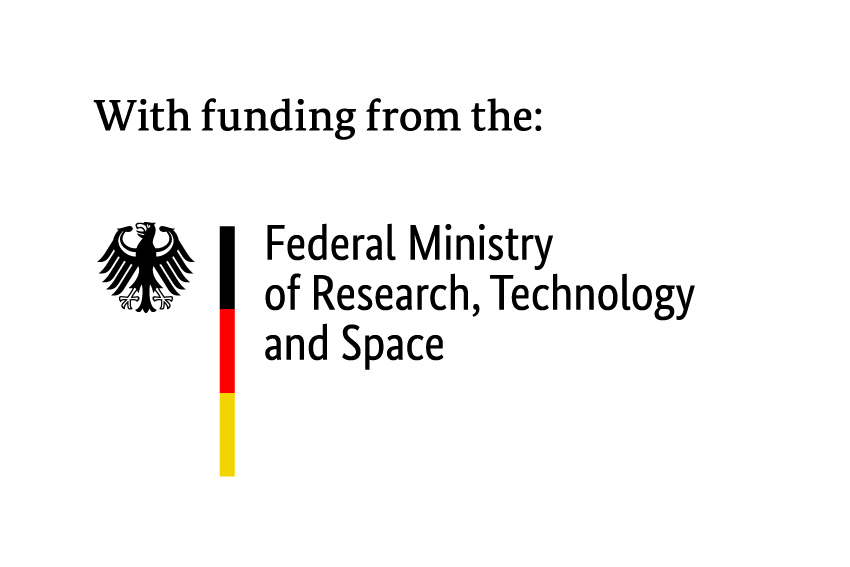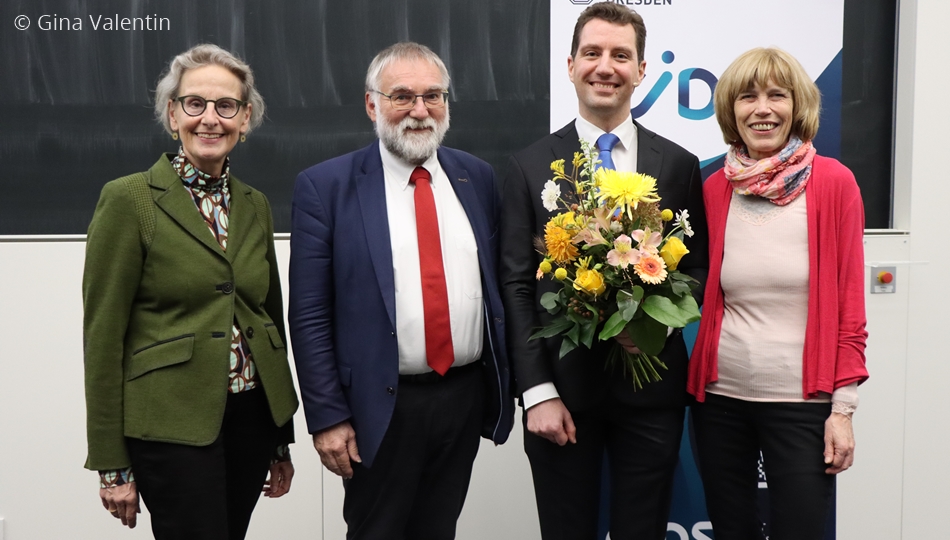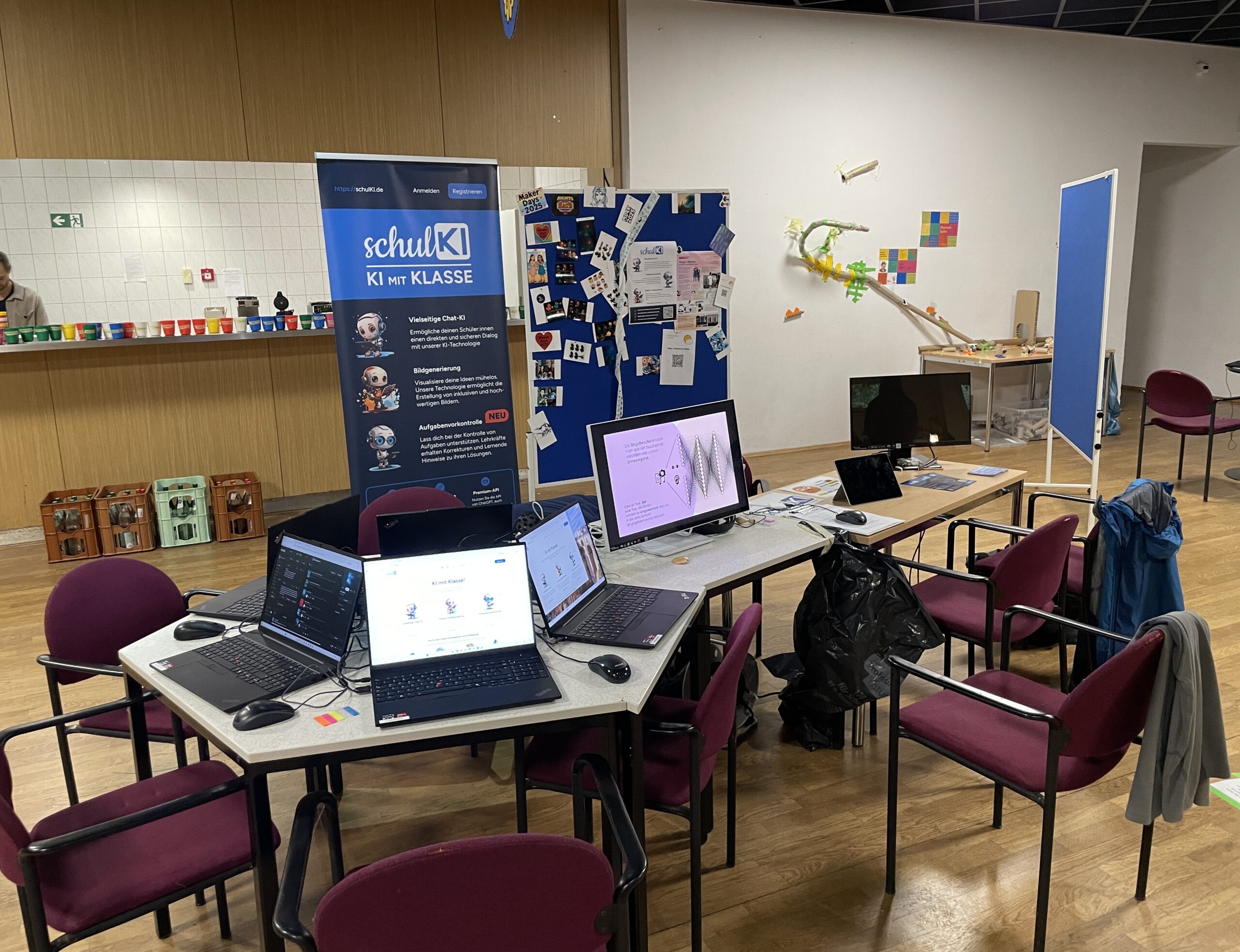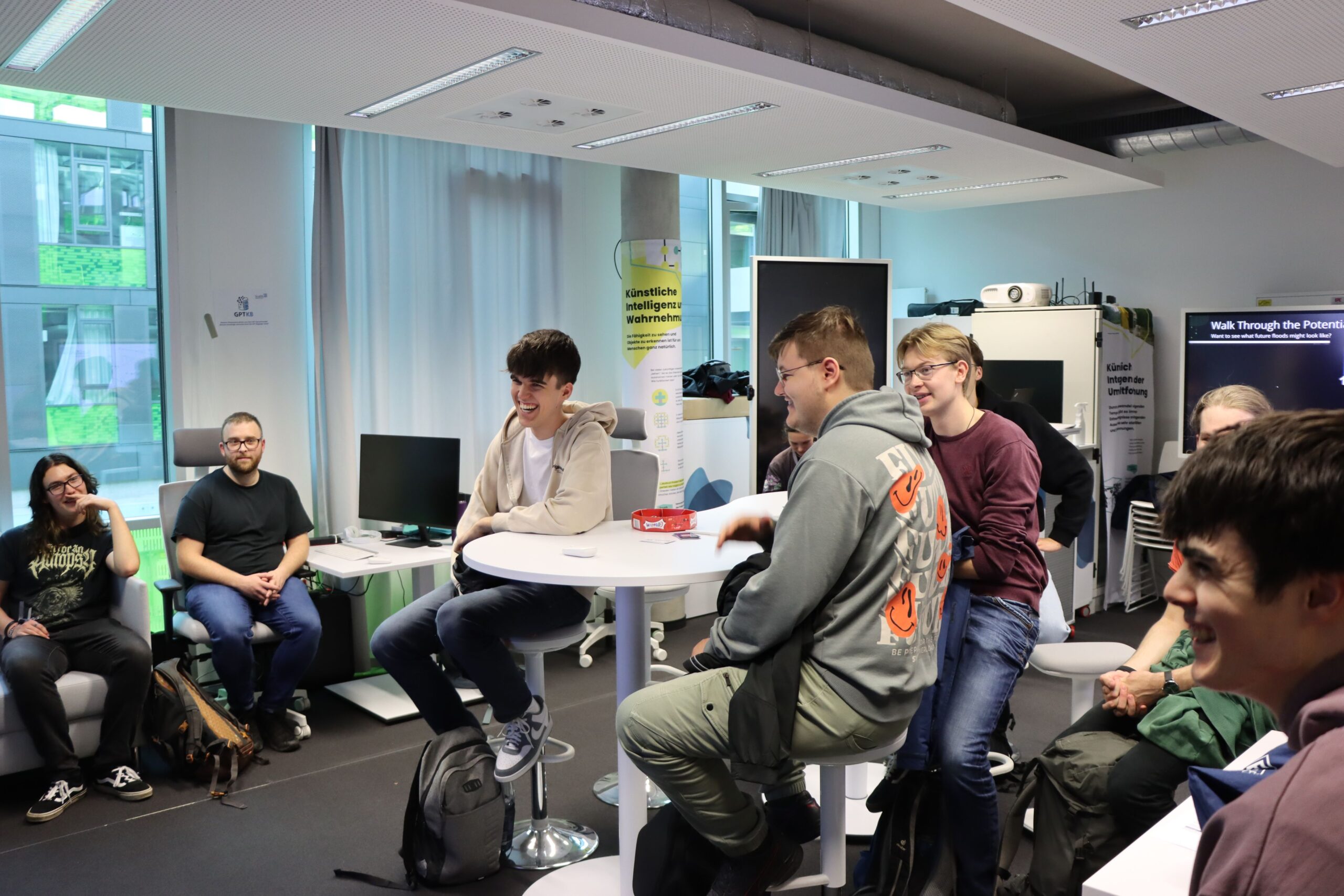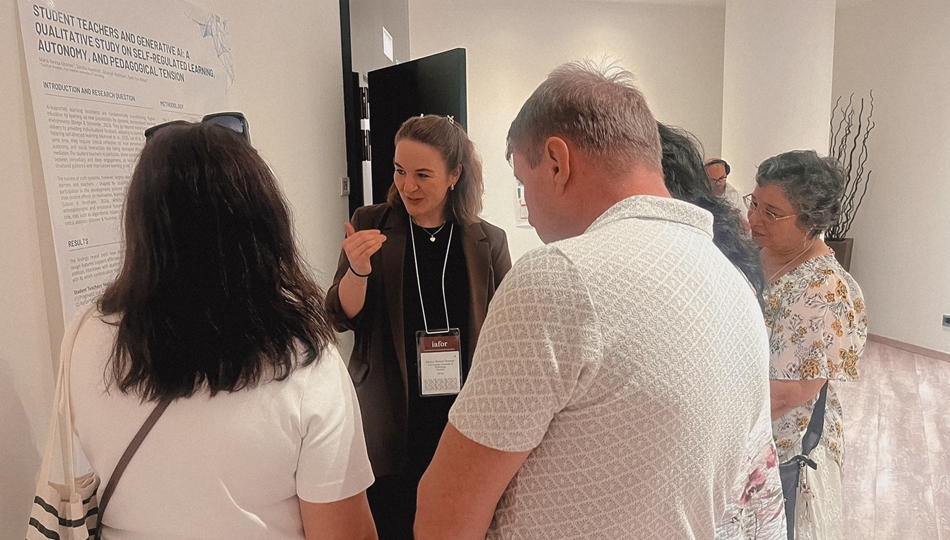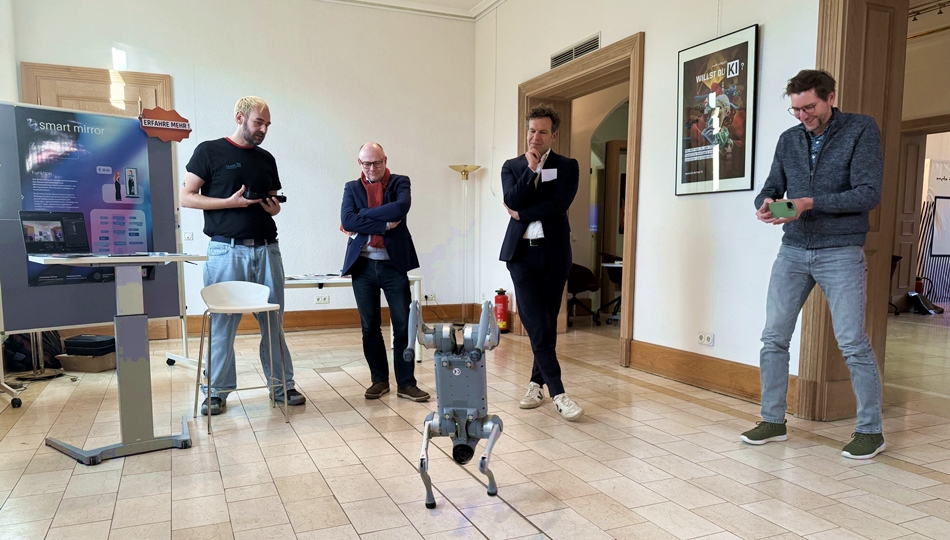
February 3, 2025
AI in the Media Industry: Balancing Innovation and Responsibility at MDR

On 27.01.2025, Vanessa Kuhfs and Johannes Häfner were invited to the MDR Campus Leipzig to contribute to an AI discovery and training day tailored for the MDR’s executive management, including the directors and intendant board. This invitation followed a prior engagement where they introduced the Smart Mirror and hosted an interactive session, Ask an AI Researcher, which fostered critical discussions on AI’s societal and ethical implications. This time, the focus was on the integration of AI into media production — highlighting both its transformative potential and the inherent challenges it presents.
AI Between Automation and Creative Control
Their contribution centered on pivotal questions regarding the future of AI in media production:
- To what extent can AI automate tasks within the production pipeline? Where does human creativity remain indispensable?
- How do generative AI models reshape collaboration among directors, editors, and production teams?
- What are the risks associated with AI-generated content, particularly in terms of bias, stereotyping, and misinformation?
- How can a public broadcasting institution such as MDR ensure that AI applications align with ethical, journalistic, and societal standards?
A key aspect of their discussion was the symbiotic relationship between AI and human creativity. While AI-driven tools can optimize production workflows — ranging from automated camera operation to robotic broadcasting — editorial oversight remains crucial. Through concrete case studies, Vanessa Kuhfs and Johannes Häfner illustrated the limitations of generative AI and the necessity of deliberate human intervention to maintain artistic integrity.
A critical area of concern was the reproduction of societal biases by AI models. Particularly in image and video generation, contemporary AI systems have a tendency to reinforce existing beauty ideals and stereotypes. Through interactive demonstrations, the management experienced firsthand how AI-generated media can distort visual representation, prompting discussions on how MDR can actively counteract these effects within its programming and editorial policies.
Challenges for Public Broadcasters
Unlike private-sector media organizations, public broadcasters operate under rigorous regulatory frameworks and bear a heightened responsibility to uphold transparency and public trust. Off-the-shelf AI solutions from commercial vendors are rarely applicable without substantial customization, as issues related to data sovereignty, accountability, and ethical compliance must be meticulously addressed. This underscores the necessity for public broadcasters to develop in-house expertise in AI, collaborate with research institutions, and establish clear ethical guidelines for AI integration.
During their discussions, our team members helped the MDR’s executive management assess the viability of AI-driven tools and navigate the complexities of integrating AI into editorial workflows while maintaining journalistic integrity.
AI in Practice: Interactive Demonstrations
Beyond theoretical discourse, the AI discovery day featured several hands-on stations, allowing the MDR’s executive management to engage directly with AI-driven applications:
- Synthetic News Anchor “Wiebke” – A deep-learning-based news presenter capable of delivering AI-generated broadcasts, raising questions about the future of automated news dissemination.
- Prompt Race – A real-time experiment in generative image AI, demonstrating the impact of precise vs. creative text prompts on visual output.
- AI Chatbots for Crisis and Community Management – An exploration of AI’s role in real-time audience engagement, particularly in crisis communication and online moderation.
- Additional AI Stations – Showcasing various AI-assisted media production tools designed to streamline editorial workflows while maintaining human oversight.
A highlight of the event was an interactive session where members of the executive management had the opportunity to actively control an AI-powered robot, experiencing firsthand how AI-driven automation can function in a broadcasting environment. This hands-on interaction provided valuable insights into the capabilities and limitations of robotic assistance in media production.
Conclusion: AI as a Tool, Not a Substitute
The discussions at MDR reaffirmed a fundamental principle: AI should be viewed as a complementary tool rather than a replacement for human creativity. In the media industry, the primary objective is not merely efficiency but the seamless integration of AI technologies into existing creative and editorial processes without compromising authenticity, artistic expression, or ethical standards.
For public broadcasters, the responsible adoption of AI requires a nuanced approach — one that prioritizes transparency, accountability, and editorial control. MDR’s proactive engagement in this discourse demonstrates a commitment to navigating the opportunities and risks of AI with a critical yet forward-thinking perspective.
